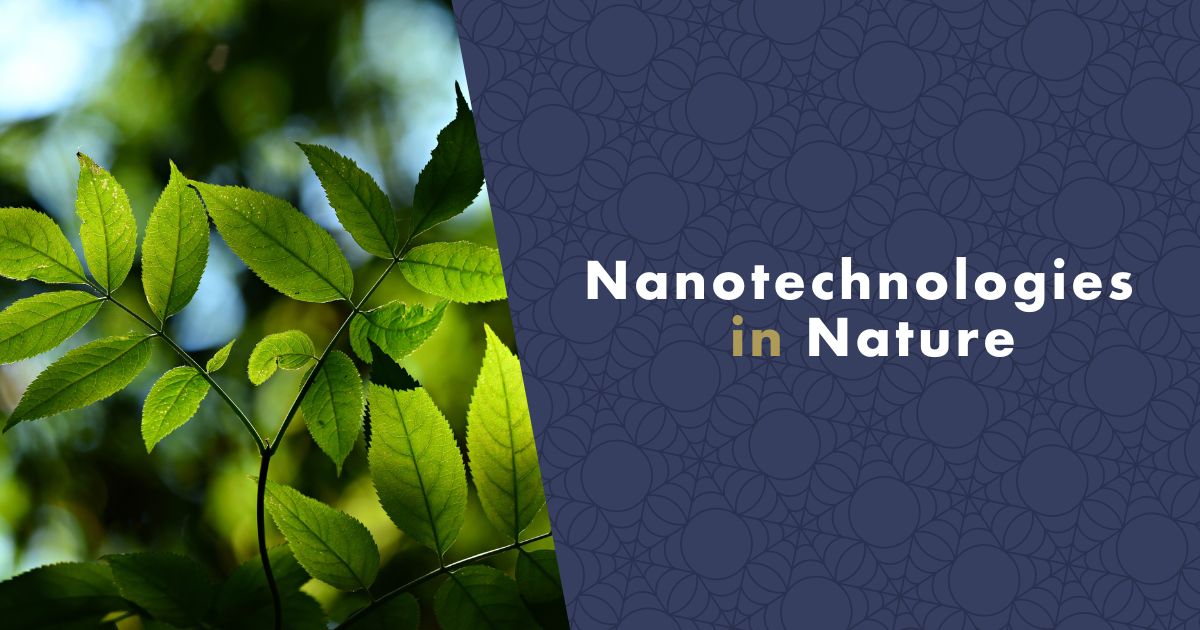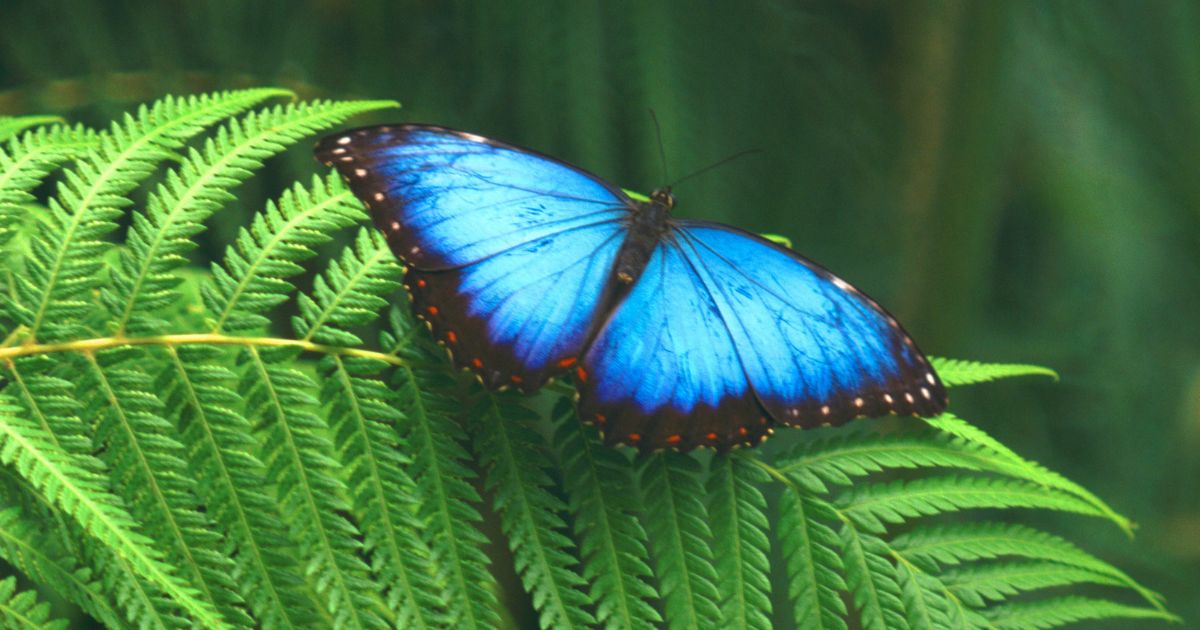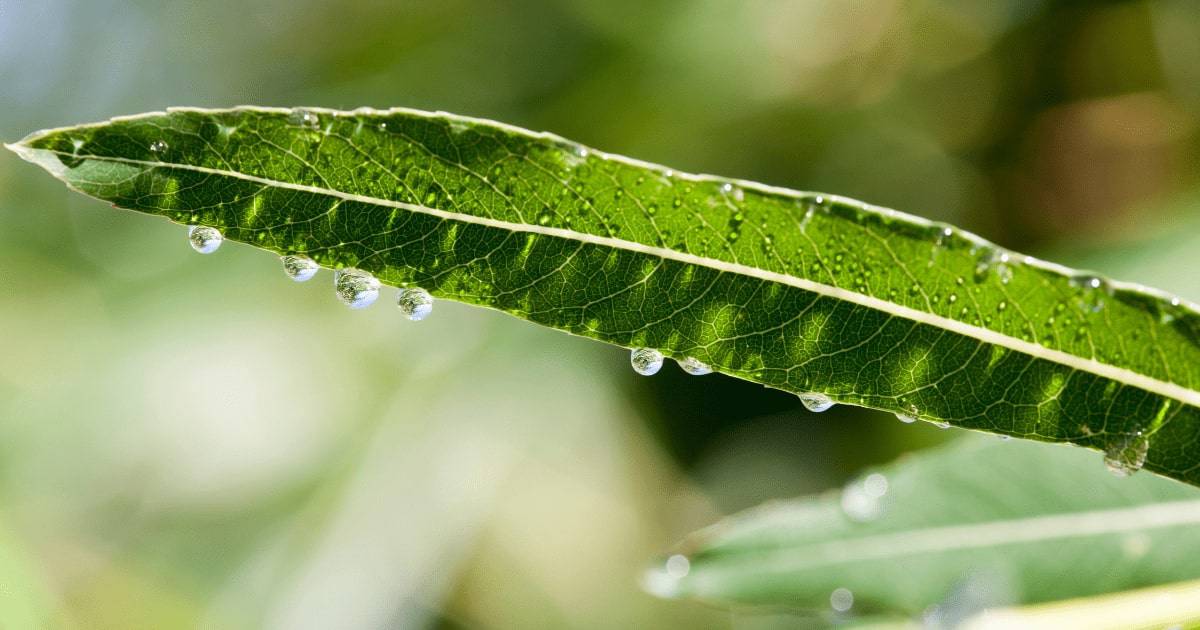While they are perceived as a very recent human invention, in fact, they have been present in nature through fossil findings since ancient times. Today, we will introduce you to the greatest nanotechnologist in the entire history of the world – nature. We will show you why the biggest source of inspiration for nanotechnologists is still nature and as you will find out for yourself, there is still much to learn from it. Let's take a look at what nanotechnologies are and where we can find them in nature.

What Are Nanotechnologies?
Nanotechnologies represent a specialized field of technology that deals with the manipulation and control of materials at the nanometric level – that means on a scale of nanometers, where one nanometer corresponds to a billionth of a meter. They focus on studying and applying tiny structures, systems, and devices with dimensions ranging from 1 to 999 nanometers.
Nanotechnologies have a broad scope and find applications in various areas - from the textile industry to the pharmaceutical sector. Even modern electronic devices, like smartphones, utilize nanotechnologies for their miniaturization and high capacity.
The history of nanotechnologies dates back to the 4th century when Roman glassmakers allegedly used them in the production of the so-called Lycurgus cups. These cups exhibited unique properties - when illuminated from the outside, they appeared green, but when light was placed inside the cup, it turned reddish. This effect was achieved by adding metallic powders containing nanoparticles.
However, modern scientific research and applications of nanotechnologies began to develop only in 1959, when physicist Richard Feynman presented his vision of manipulating and controlling atoms and particles at the nanometer scale.
Creating Self-Cleaning Paints Without Pigments: Drawing Inspiration from Insects
We've long known that colors can be created through pigments. However, nature has convinced us that there are other possibilities. The wings of certain insect species, such as butterflies, are covered with nanostructures made of chitin. Their size approaches the wavelength of visible light.
These nanostructures serve as anti-reflective and self-cleaning surfaces, mechanical reinforcement, support for wing aerodynamics, and they also create iridescent coloring, meaning colors that play like a rainbow.
What Is Iridescence?
Iridescence is the result of the interplay between light radiation and nanostructures. For instance, in the case of butterflies of the Morpho genus from the family Nymphalidae, these nanostructures create natural photonic crystals, which manifest as the dazzling blue color of the mentioned butterflies' wings. No pigment contributes to creating this color.

Scientists are intensely studying these structures and seeking their applications. The utilization of such structures extends not only to creating durable colored surfaces, but also to technologies like optical communication or the development of sensors detecting minute temperature changes.
Low-Cost and Non-Toxic Paints Could Be Made from Cellulose Nanofibers
As recent research has shown, the striking white color of Southeast Asian beetle species called Cyphochilus is also created by nanostructures of chitin, with light diffusing on this structure. Scientists managed to mimic such a structure on thin membranes composed of cellulose nanofibers.
This material is inexpensive, easily accessible, non-toxic, and usable in the human body. It could be applied in paint production, consumer goods, cosmetics, or food. Nature can also create different structural colors besides chitinous ones. Jewel beetles, gorgeous relatives of scarab beetles, gleam with metallic colors.
Such coloration is created by nanostructures from melanosomes, cell organelles containing melanin. While melanin is a pigment, in this case, it results in purely physical coloring, generated through light scattering. The beautifully metallic-shining fruits of the African plant Pollia condensata from the Rubiaceae family are colored thanks to nanostructures of cellulose fibers.
Chameleons Are Nano, Do You Know Why?
Fascinating reptiles, chameleons are famous for their ability to change color and adapt to their environment. When a chameleon changes color, for example, from turquoise to pink, orange, or green, it actually employs nanotechnology. The manipulation of nano-crystals that chameleons have in their skin takes place during this camouflage.
The arrangement of these nano-crystals determines the skin's final color. The camouflage of chameleons has become an inspiration, for instance, in the development of nanolasers, consisting of metallic nanoparticles positioned on an elastic polymer substrate.
Movements of the polymer substrate alter the arrangement of nano-particles, which in turn determines the wavelength of the nanolaser's radiation, i.e., the color of its beam. Nanolasers could find applications in touch optical displays, photonic circuits, or optical communication.

Geckos Walk on Glass Thanks to Nanoscale Structures
Geckos possess an excellent natural nanotechnology. The surface of their feet can securely adhere to almost any solid surface in a matter of milliseconds, without visibly exerting effort. It's a purely physical process where no chemistry is involved. Geckos have a layer of tiny, soft, and flexible keratin bristles on their soles, measuring roughly 200 nanometers. They are arranged in a way that allows efficient molecular Van der Waals force interaction. Moreover, thanks to this nanostructure, the geckos' foot surface is also self-cleaning.
Lotus Leaves Inspire Hydrophobic Surfaces in Car Care and Textiles
Many plant species lead quite an extreme lifestyle and are equipped with a range of clever adaptations. Among them are nanotechnologies that make life easier for these plants. Lotuses grow in stagnant or slowly flowing waters of the tropics and subtropics. Their leaves have a special surface consisting of protrusions measuring 10 micrometers, among which there are approximately 100 nanometers sized hydrophobic wax-like material extensions. The resulting surface of the lotus leaf is superhydrophobic and possesses excellent self-cleaning capabilities. The nanostructure of the leaf's surface minimizes the area on which water or impurities can adhere. Nanotechnology inspired by the lotus has influenced a variety of colors, clothing, cleaning products for bathrooms and households, and even automotive components.
Tip: Are nanotechnologies safe? Read our article to find out.
Carnivorous Plants Combat Biological Pollution
Bizarre carnivorous plants like pitcher plants have traps lined with a slippery surface featuring a nanostructure resembling tiny wrinkles. When insects come into contact with such a surface, their fate is sealed. They slide into the trap, where the pitcher plant gradually digests them.
Scientists have used similar nano-wrinkled surfaces to develop materials that microorganisms responsible for biological pollution practically cannot settle on. The pitcher plant-inspired surface also works in aggressive seawater. It is malleable and highly transparent, making it useful for optics and sensors exposed to prolonged water exposure.

Similar tactics are employed by animals as well. Certain moth species have hexagonally shaped protrusions on their compound eyes, each measuring a couple of hundred nanometers, spaced at a similar nanometer distance. This creates a nanostructure with an arrangement smaller than the wavelength of visible light. As a result, moths with such eyes can see much better in darkness or dim light than humans can. These structures have found applications in constructing thermophotovoltaic cells.
Nature as the Inventor of Strong and Lightweight Materials
Natural selection has managed to create remarkable structural nanomaterials, yielding incredibly strong and often very lightweight structures like skeletons and shells of organisms. One of the strongest natural materials is mother-of-pearl, an organic-inorganic composite used in the shells of some mollusks.
Mother-of-pearl forms through the deposition of amorphous calcium carbonate into porous layers of chitin. This results in a crystalline material with nanoscale aragonite plates, chitin, and proteins.
Thanks to this structure, mother-of-pearl is incredibly hard. Similar nanocomposites are being created in many laboratories and could potentially be applied in personal armor, construction materials, durable electronics, or even aviation and space technologies.
Resilient Concrete Production Inspired by Sea Urchins
The spines of sea urchins are made of calcite, a form of calcium carbonate that is usually brittle and fragile. However, these spines are much stronger than they should be due to their nanostructure.
Material scientists drew inspiration from sea urchins, using the nanostructure of their spines to develop extremely durable and strong concrete. This concrete could support a pillar reaching up to 8 kilometers in height before succumbing to its own weight.
In comparison, a structural steel pillar would collapse at just 3 kilometers. Both mother-of-pearl and sea urchin spines possess a nanostructured mesocrystalline structure, providing strength while maintaining low weight.
Nature's Nano Particles Are All Around Us, Waiting to Be Utilized
Nature is a skilled nanotechnologist when it comes to producing nanoparticles. In the environment, a variety of nanoparticles are formed through chemical and biological processes. These nanoparticles can inspire us and be directly used in various applications.

Seawater Contains Nanoparticles Suitable for Biomedicine
For instance, the surface layers of water contain nanoparticles of calcium carbonate, which can be utilized in biotechnology, industry, agriculture, as well as nanoparticles of aluminum oxide, suitable for water purification, and silicon nanoparticles, useful in biomedicine, food production, and catalysis. Silicon nanoparticles are also present in volcanic eruption material. Seawater also contains nanoparticles of calcium sulfate, suitable for biomedicine. Water also holds nanoparticles of silver with various applications.
Tip: Do you know what nanotechnologies have to do with chocolate? No? Read the article to find out.
Nature's Nanoparticles Can Also Benefit Agriculture
In sediments following glacier retreat, nanoparticles of iron(II)-iron(III) oxide are found, which can be utilized in diagnostics, biomedicine, sensors, and supercapacitors. Nanoparticles of manganese oxide from circuits are suitable for water purification and catalysis. In sulfide springs, nanoparticles of sulfur can be found for biomedicine or agriculture. In ores, there are also nanoparticles of gold, finding applications in biosensors and biomedicine. Nanoparticles can even be found in exhalations, such as carbon or platinum nanoparticles, which can serve various useful purposes.
Sources
- Parker, A. R. (2003). On being blue: natural blue pigments and dyestuffs. Chemical Society Reviews, 32(5), 342-352.
- Fernández‐García, M., & Stamplecoskie, K. G. (2015). Nanochemistry: An emerging field in the intersection of materials, energy, and biology. Particle & Particle Systems Characterization, 32(3), 191-192.
- Suresh, S., Karthikeyan, S., & Singaravelu, G. (2018). Biologically inspired nanotechnology: Advances and prospects. Applied Nanoscience, 8(2), 91-97.
- Sarikaya, M., & Aksay, I. A. (2011). Biomimetics: Lessons from nature—An overview. Philosophical Transactions of the Royal Society A: Mathematical, Physical and Engineering Sciences, 369(1945), 1598-1613.
- Bhushan, B., & Gupta, B. (2008). Biomimetic hierarchical structures for hydrophobicity, self-cleaning, and low adhesion. Philosophical Transactions of the Royal Society A: Mathematical, Physical and Engineering Sciences, 366(1870), 1557-1574.
- Siddique, M., Parveen, S., & Anjum, S. (2018). Nature-inspired materials: synthesis, properties, and applications. Journal of Materials Research and Technology, 7(3), 317-329.
- Bergamo, V. Z., & de Oliveira, M. G. (2020). Nanotechnology and biomimetics: new perspectives for the treatment of infectious diseases. RSC Advances, 10(32), 18806-18822.
- Song, J., Li, X., Zhao, L., Lin, X., Ding, Y., & Pan, X. (2020). The emerging role of biomimetic nanotechnology in combating COVID-19. Journal of Materials Chemistry B, 8(42), 9695-9711.
- Li, D., Li, L., Li, Y., Liu, J., & Li, Q. (2019). Nature-inspired materials for biomedical applications: Synthesis, surface modification, and application. Colloids and Surfaces B: Biointerfaces, 184, 110538.
- Wang, X., Xie, H., Xue, B., & Xia, Y. (2021). Biomimetic materials design and applications. Nano Today, 36, 101013.

